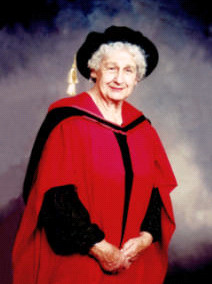
Had it not been for the passion of a self-trained South African naturalist, the discovery of a living specimen of the rare coelacanth around this time in 1938 may never have happened.
Eastern Cape native Marjorie Courtenay-Latimer originally trained as a nurse. Although her wish was to work in a museum, there were few opportunities at the time.
Her wish did come true – in 1931, without any formal training, she landed the position of curator of the East London Museum, established a decade before and still in existence today. The museum had just moved to new premises, and Courtenay-Latimer was 24 at the time.
Her passion for her work was boundless, and her main interest was birds. In her desire to gather unusual specimens for the museum, she did much of the collecting herself.
Reports say that she donated her great-aunt Lavinia’s dodo egg to the museum – apparently the only dodo egg in existence today, although this is a debatable issue as DNA tests have not been allowed.
In 1935 she and a colleague excavated the almost complete fossil skeleton of the mammal-like reptile Kannemeyeria simocephalus from a site near Tarkastad in the Eastern Cape. This species is said to be the standard against which other similar animals from the Middle Triassic period is compared.
Courtenay-Latimer also sent out a request to local fisherman to alert her if they caught anything out of the ordinary.
It was this foresight that led to the identification of a fish that had only ever been seen as a fossil and was thought to have died out about 70-million years ago. On 22 December 1938 Courtenay-Latimer received a call from Hendrik Goosen, the skipper of the fishing trawler Nerine, which had netted a catch just off the Eastern Cape's Chalumna, or Tyolomnqa River.
Story By: Janine Erasmus
Caption: In 1971 Marjorie Courtenay-Latimer received an honorary doctorate from Rhodes University for her contribution to science.
Image Source: South African Institute for Aquatic Biodiversity
